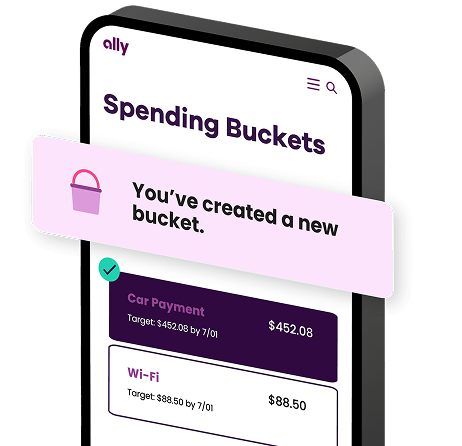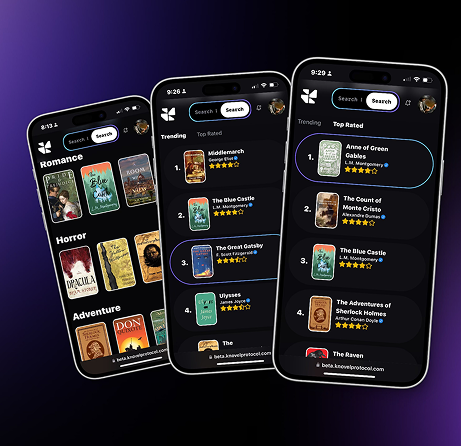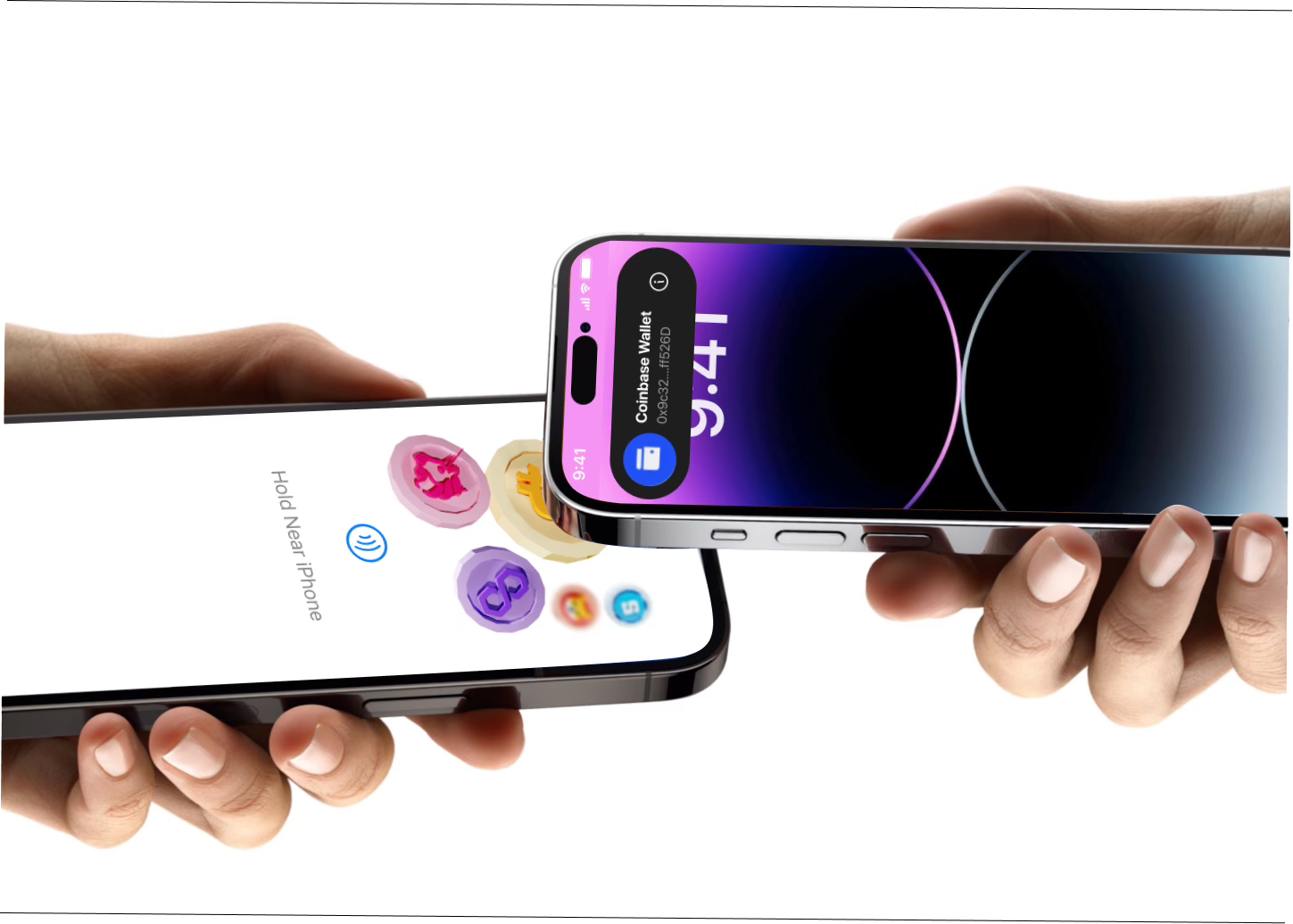

Case Study
Coinbase: Tap to Cash for Crypto
The project was entirely self-directed, with input from blockchain engineers and mobile UX peers. My role encompassed research, interaction design, prototyping, and technical strategy.
Product Design
Research & Testing
Visual Design
Branding & Direction
Collaboration
🧭 Setting the Context
In the summer haze of 2024, I set out on a quiet quest during ETHGlobal’s Hackathon. The problem? Crypto had become too abstract, too heady. Where was the feeling? The magic of handing someone a dollar? The invisible handshake of trust?
With Coinbase quietly launching their MPC Wallet SDK, I saw an opportunity:Could I make peer-to-peer crypto as smooth, physical, and intimate as AirDrop or Apple Pay?
So I did what any 12th house Mercury in Leo would do—I disappeared into research, built in silence, and emerged with CoinDrop, a tap-to-send experience that felt less like code and more like a conversation.
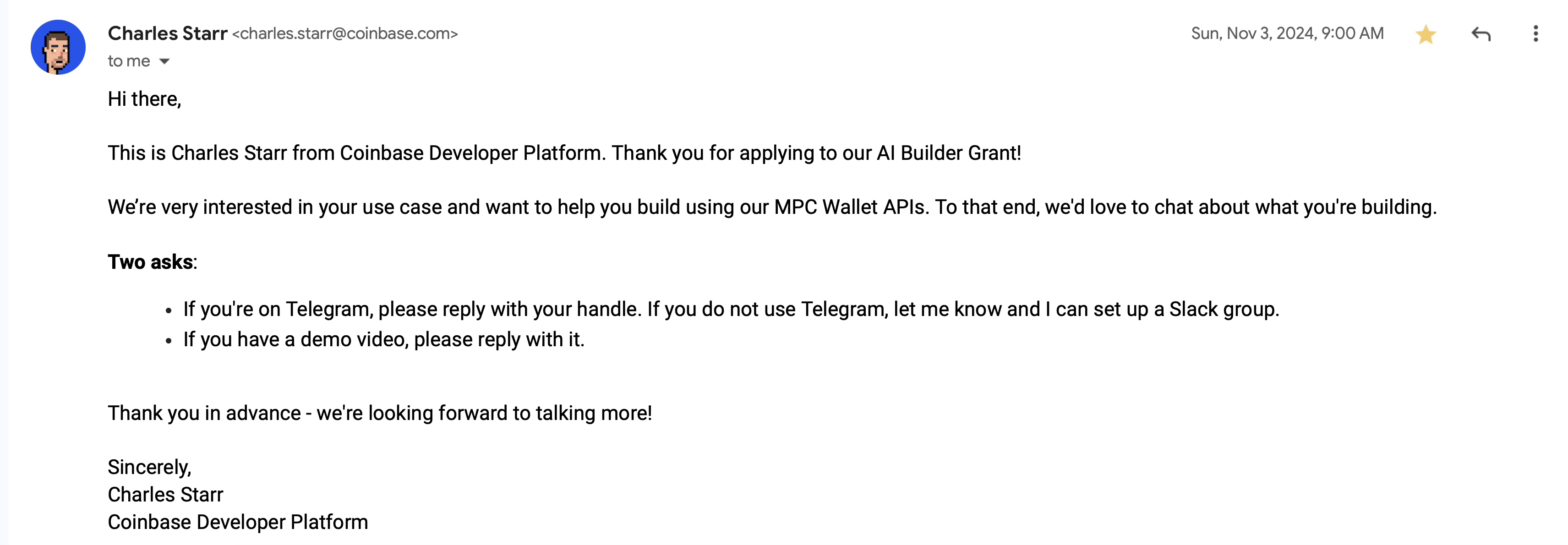
Users & Audience
In the summer haze of 2024, I set out on a quiet quest during ETHGlobal’s Hackathon. The problem? Crypto had become too abstract, too heady. Where was the feeling? The magic of handing someone a dollar? The invisible handshake of trust?
With Coinbase quietly launching their MPC Wallet SDK, I saw an opportunity:Could I make peer-to-peer crypto as smooth, physical, and intimate as AirDrop or Apple Pay?
So I did what any 12th house Mercury in Leo would do—I disappeared into research, built in silence, and emerged with CoinDrop, a tap-to-send experience that felt less like code and more like a conversation.

❗️The Problem
People don’t trust what they can’t feel.Crypto wallets are notoriously cold—QR codes, gas fees, and a labyrinth of confirmations. Especially in real life, standing across from a friend or stranger, this friction kills the moment.
My hypothesis:
“Crypto needs an emotional interface—one that works like magic, but builds trust like cash in hand.”
Through deep comparisons (Venmo, Apple Cash, Coinbase Wallet), I learned:
- QR codes = mechanical and awkward
- Apple Pay = trusted, immediate, intimate
- MPC = powerful but invisible to the user
In other words: crypto had the tech, but not the theater. CoinDrop set out to bring both.
✍️ The Actions
I became both director and stagehand, crafting the experience from every angle:
🎬 Research & Direction
I mapped out real-world peer payment behaviors and drew UX comparisons from Apple Pay and AirDrop. Reddit and App Store reviews whispered secrets about what users loved—and hated.
Why? Because intuition is nothing without structure. Leo commands clarity.Result: I discovered that users crave immediacy, validation, and mirrored feedback.
🖼️ Journey Mapping & Interface Sketches
I storyboarded each micro-moment:
- Sender meets receiver
- Devices pair with a soft pulse
- Amount is confirmed
- Biometric authentication glows
- Both phones shimmer with success
Why? To make every step feel choreographed, like a duet.Result: An experience so fluid, users didn’t need a tutorial. Just a tap.
🔐 MPC Wallet Logic
I dove into Coinbase’s new MPC architecture and built mock signing flows—abstracting multi-party cryptography into something users never had to think about.
Why? Because real security should feel like stage lighting—powerful, silent, and always working.Result: A transaction model that felt instant while being distributed and secure under the hood.
📱 Prototyping the Magic
I created a working mobile prototype:
- Simulated device pairing (via NFC/Bluetooth)
- Biometric confirmation
- Visual and haptic feedback synced across devices
Why? Because prototypes are performances—they show, not tell.Result: When I demoed CoinDrop, people said: “Whoa, it feels like AirDrop for crypto.”
That’s all I needed to hear.
🤝 Coinbase Developer Loop
After I submitted my project, Coinbase Developer Platform reached out. Charles Starr from their team invited me to go deeper, exploring potential integration paths.
Why? Because CoinDrop wasn’t just a concept. It was a proof of design intuition + technical foresight.Result: An open channel with Coinbase, and a growing sense that this could be something bigger.
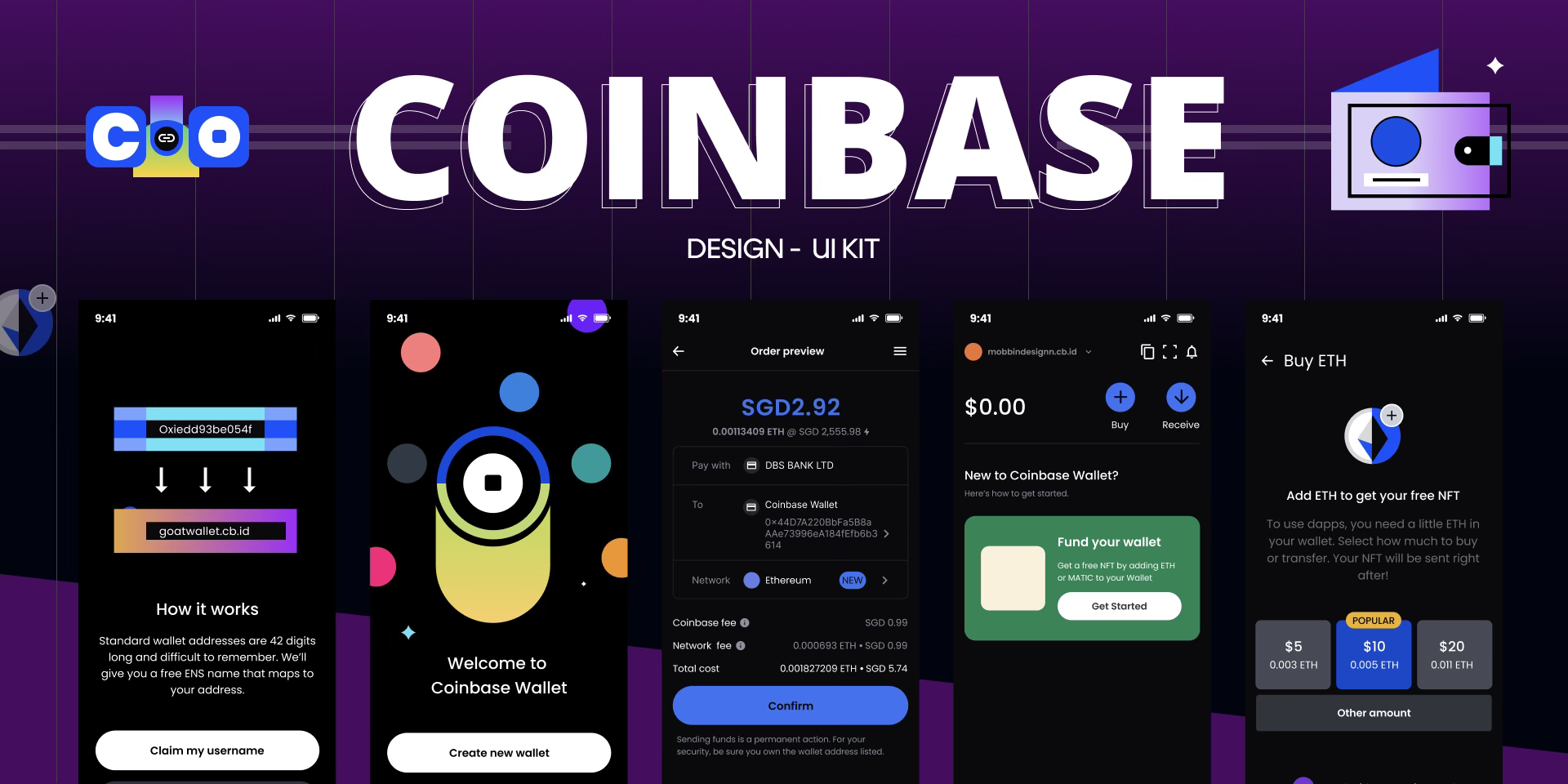
✅ The Results
- Functional prototype that mimicked the magic of real-world hand-to-hand value transfer
- Coinbase interest and early feedback validating the vision
- ETHGlobal grant recognition, opening doors to future development
- CoinDrop turned cryptography into choreography—users didn’t see the backend, they felt the experience.
🎉 Final Product
- 🪞Designing for real life means prioritizing feeling over features.🧠MPC and Web3 are only meaningful when abstracted with grace.🎭Emotion is UX’s secret weapon—and in person, it’s non-negotiable.
- If I were to do it again? I’d integrate real NFC testing and expand the metaphor even further—perhaps allowing people to “catch” value with gestures or share energy through visuals.
A bold headline
that delivers
View Prototype
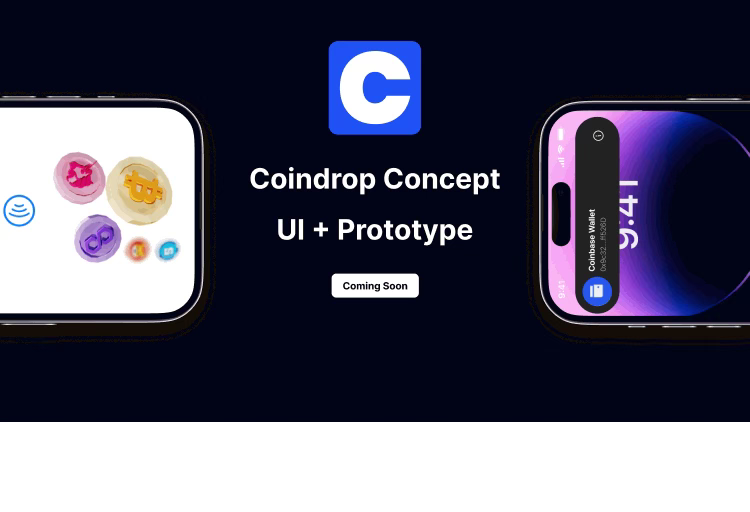
TL;DR
This case study shows how real-world human interactions — like tapping phones — can be merged with advanced cryptographic tooling like MPC to offer seamless, secure crypto experiences. I'm currently exploring partnerships to take this from prototype to pilot.
Other Projects
Connect with us to explore your project's potential.

OFFICE
San Francisco
CONTACT
contact@tyricehicks.com
SOCIAL
TYRICE HICKS


Case Study
Coinbase: Tap to Cash for Crypto
I served as the Product Designer and UX Strategist, initiating the project after ETHGlobal. I was later contacted by Charles Starr from Coinbase Developer Platform following my application to the Coinbase AI Builder Grant. I handled end-to-end UX design, product strategy, research synthesis, demo prototyping, and collaboration with dev teams exploring Coinbase’s MPC APIs.
“We’re very interested in your use case and want to help you build using our MPC Wallet APIs.” — Charles Starr, Coinbase Developer Platform
This was a solo-led project with potential for engineering collaboration via Coinbase’s builder community and grants.
Product Design
Research & Testing
Visual Design
Branding & Direction
Collaboration
🧭 Setting the Context
In the summer haze of 2024, I set out on a quiet quest during ETHGlobal’s Hackathon. The problem? Crypto had become too abstract, too heady. Where was the feeling? The magic of handing someone a dollar? The invisible handshake of trust?
With Coinbase quietly launching their MPC Wallet SDK, I saw an opportunity:Could I make peer-to-peer crypto as smooth, physical, and intimate as AirDrop or Apple Pay?

Users & Audience
In the summer haze of 2024, I set out on a quiet quest during ETHGlobal’s Hackathon. The problem? Crypto had become too abstract, too heady. Where was the feeling? The magic of handing someone a dollar? The invisible handshake of trust?
With Coinbase quietly launching their MPC Wallet SDK, I saw an opportunity:Could I make peer-to-peer crypto as smooth, physical, and intimate as AirDrop or Apple Pay?
So I did what any 12th house Mercury in Leo would do—I disappeared into research, built in silence, and emerged with CoinDrop, a tap-to-send experience that felt less like code and more like a conversation.

❗️The Problem
People don’t trust what they can’t feel.Crypto wallets are notoriously cold—QR codes, gas fees, and a labyrinth of confirmations. Especially in real life, standing across from a friend or stranger, this friction kills the moment.
My hypothesis:
“Crypto needs an emotional interface—one that works like magic, but builds trust like cash in hand.”
Through deep comparisons (Venmo, Apple Cash, Coinbase Wallet), I learned:
- QR codes = mechanical and awkward
- Apple Pay = trusted, immediate, intimate
- MPC = powerful but invisible to the user
In other words: crypto had the tech, but not the theater. CoinDrop set out to bring both.
✍️ The Actions
I became both director and stagehand, crafting the experience from every angle:
🎬 Research & Direction
I mapped out real-world peer payment behaviors and drew UX comparisons from Apple Pay and AirDrop. Reddit and App Store reviews whispered secrets about what users loved—and hated.
Why? Because intuition is nothing without structure. Leo commands clarity.Result: I discovered that users crave immediacy, validation, and mirrored feedback.
🖼️ Journey Mapping & Interface Sketches
I storyboarded each micro-moment:
- Sender meets receiver
- Devices pair with a soft pulse
- Amount is confirmed
- Biometric authentication glows
- Both phones shimmer with success
Why? To make every step feel choreographed, like a duet.Result: An experience so fluid, users didn’t need a tutorial. Just a tap.
🔐 MPC Wallet Logic
I dove into Coinbase’s new MPC architecture and built mock signing flows—abstracting multi-party cryptography into something users never had to think about.
Why? Because real security should feel like stage lighting—powerful, silent, and always working.Result: A transaction model that felt instant while being distributed and secure under the hood.
📱 Prototyping the Magic
I created a working mobile prototype:
- Simulated device pairing (via NFC/Bluetooth)
- Biometric confirmation
- Visual and haptic feedback synced across devices
Why? Because prototypes are performances—they show, not tell.Result: When I demoed CoinDrop, people said: “Whoa, it feels like AirDrop for crypto.”
That’s all I needed to hear.
🤝 Coinbase Developer Loop
After I submitted my project, Coinbase Developer Platform reached out. Charles Starr from their team invited me to go deeper, exploring potential integration paths.
Why? Because CoinDrop wasn’t just a concept. It was a proof of design intuition + technical foresight.Result: An open channel with Coinbase, and a growing sense that this could be something bigger.

✅ The Results
- Functional prototype that mimicked the magic of real-world hand-to-hand value transfer
- Coinbase interest and early feedback validating the vision
- ETHGlobal grant recognition, opening doors to future development
- CoinDrop turned cryptography into choreography—users didn’t see the backend, they felt the experience.
🎉 Final Product
- 🪞Designing for real life means prioritizing feeling over features.🧠MPC and Web3 are only meaningful when abstracted with grace.🎭Emotion is UX’s secret weapon—and in person, it’s non-negotiable.
- If I were to do it again? I’d integrate real NFC testing and expand the metaphor even further—perhaps allowing people to “catch” value with gestures or share energy through visuals.
A bold headline
that delivers
View Prototype

TL;DR
This case study shows how real-world human interactions — like tapping phones — can be merged with advanced cryptographic tooling like MPC to offer seamless, secure crypto experiences. I'm currently exploring partnerships to take this from prototype to pilot.
Other Projects
Connect with me to explore your project's potential.

HOME OFFICE
San Francisco
CONTACT
contact@tyricehicks.com
SOCIAL
TYRICE HICKS


Case Study
Coinbase: Tap to Cash for Crypto
I served as the Product Designer and UX Strategist, initiating the project after ETHGlobal. I was later contacted by Charles Starr from Coinbase Developer Platform following my application to the Coinbase AI Builder Grant. I handled end-to-end UX design, product strategy, research synthesis, demo prototyping, and collaboration with dev teams exploring Coinbase’s MPC APIs.
“We’re very interested in your use case and want to help you build using our MPC Wallet APIs.” — Charles Starr, Coinbase Developer Platform
This was a solo-led project with potential for engineering collaboration via Coinbase’s builder community and grants.
Product Design
Research & Testing
Visual Design
Branding & Direction
Collaboration
🧭 Setting the Context
In the summer haze of 2024, I set out on a quiet quest during ETHGlobal’s Hackathon. The problem? Crypto had become too abstract, too heady. Where was the feeling? The magic of handing someone a dollar? The invisible handshake of trust?
With Coinbase quietly launching their MPC Wallet SDK, I saw an opportunity:Could I make peer-to-peer crypto as smooth, physical, and intimate as AirDrop or Apple Pay?
So I did what any 12th house Mercury in Leo would do—I disappeared into research, built in silence, and emerged with CoinDrop, a tap-to-send experience that felt less like code and more like a conversation.


Users & Audience
Our core users are crypto-savvy individuals and everyday users looking for a simpler way to exchange digital assets in person. This includes:
- Friends splitting bills at dinner
- Vendors accepting payments at local events
- Users gifting crypto casually
- Onboarding new crypto users with ease
Internal stakeholders included Coinbase Developer Platform leads and Web3 builders focused on next-gen wallet experiences.

❗️The Problem
People don’t trust what they can’t feel.Crypto wallets are notoriously cold—QR codes, gas fees, and a labyrinth of confirmations. Especially in real life, standing across from a friend or stranger, this friction kills the moment.
My hypothesis:
“Crypto needs an emotional interface—one that works like magic, but builds trust like cash in hand.”
Through deep comparisons (Venmo, Apple Cash, Coinbase Wallet), I learned:
- QR codes = mechanical and awkward
- Apple Pay = trusted, immediate, intimate
- MPC = powerful but invisible to the user
In other words: crypto had the tech, but not the theater. CoinDrop set out to bring both.
✍️ The Actions
I became both director and stagehand, crafting the experience from every angle:
🎬 Research & Direction
I mapped out real-world peer payment behaviors and drew UX comparisons from Apple Pay and AirDrop. Reddit and App Store reviews whispered secrets about what users loved—and hated.
Why? Because intuition is nothing without structure. Leo commands clarity.Result: I discovered that users crave immediacy, validation, and mirrored feedback.
🖼️ Journey Mapping & Interface Sketches
I storyboarded each micro-moment:
- Sender meets receiver
- Devices pair with a soft pulse
- Amount is confirmed
- Biometric authentication glows
- Both phones shimmer with success
Why? To make every step feel choreographed, like a duet.Result: An experience so fluid, users didn’t need a tutorial. Just a tap.
🔐 MPC Wallet Logic
I dove into Coinbase’s new MPC architecture and built mock signing flows—abstracting multi-party cryptography into something users never had to think about.
Why? Because real security should feel like stage lighting—powerful, silent, and always working.Result: A transaction model that felt instant while being distributed and secure under the hood.
📱 Prototyping the Magic
I created a working mobile prototype:
- Simulated device pairing (via NFC/Bluetooth)
- Biometric confirmation
- Visual and haptic feedback synced across devices
Why? Because prototypes are performances—they show, not tell.Result: When I demoed CoinDrop, people said: “Whoa, it feels like AirDrop for crypto.”
That’s all I needed to hear.
🤝 Coinbase Developer Loop
After I submitted my project, Coinbase Developer Platform reached out. Charles Starr from their team invited me to go deeper, exploring potential integration paths.
Why? Because CoinDrop wasn’t just a concept. It was a proof of design intuition + technical foresight.Result: An open channel with Coinbase, and a growing sense that this could be something bigger.

✅ The Results
- Functional prototype that mimicked the magic of real-world hand-to-hand value transfer
- Coinbase interest and early feedback validating the vision
- ETHGlobal grant recognition, opening doors to future development
- CoinDrop turned cryptography into choreography—users didn’t see the backend, they felt the experience.
🎉 Final Product
- 🪞Designing for real life means prioritizing feeling over features.🧠MPC and Web3 are only meaningful when abstracted with grace.🎭Emotion is UX’s secret weapon—and in person, it’s non-negotiable.
- If I were to do it again? I’d integrate real NFC testing and expand the metaphor even further—perhaps allowing people to “catch” value with gestures or share energy through visuals.
A bold headline
that delivers
View Prototype

TL;DR
This case study shows how real-world human interactions — like tapping phones — can be merged with advanced cryptographic tooling like MPC to offer seamless, secure crypto experiences. I'm currently exploring partnerships to take this from prototype to pilot.
Other Projects
Connect with me to explore your project's potential.

HOME OFFICE
San Francisco
CONTACT
contact@tyricehicks.com
SOCIAL
TYRICE HICKS

